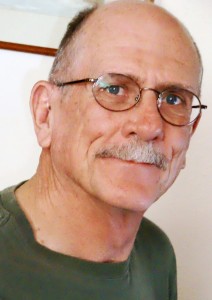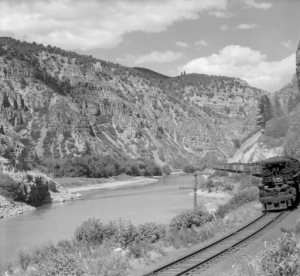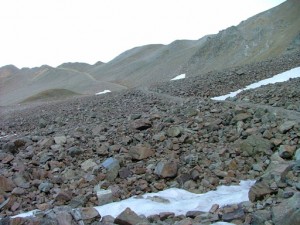Wild Night
We graduated high school and spent the summer hanging around Fruita before starting our new lives. Most nights we met at the pool hall and went to Grand Junction for a movie, drove around drinking beer, or shot pool.
We saw Joe park his old Power Wagon and walk in. He said, “I twisted off from my roughnecking job down at Moab and have to pick up my gear. Lee, I’ll buy the gas and beer if we can go in your Mercury. My Wagon isn’t too happy over 35.”
“Sure.” Lee said. “We can run down there and be back before midnight. Ought to be fun.”
Joe said, “Do you guys want to come along?” to Ed and me. We headed for Lee’s nice ‘56 Mercury and piled in. Joe bought a case of Coors bottles for the trip. We threw the empties at road signs.
It was 100 miles to Moab then fifteen miles of dirt road to the drill rig with Joe’s stuff. After an hour and a half and most of the beer we turned onto the narrow dirt road. It followed the Colorado River downstream in a canyon with sheer sandstone walls on one side and the river on the other.
We made it to the rig, Joe got his gear, and we headed back to Moab. About half way there, Joe yelled, “Stop! There’s a Ring-tailed Cat.”
The Ringtail, as it is now called, is a member of the raccoon family, lean and leggy for nocturnal hunting in its desert habitat. He was between the car and the cliff wall, with a little scrub to hide behind.
“I’m going to get that sucker.” Joe said as he took some heavy work gloves and jumped out of the car. The cat tried to go up the sandstone wall and Joe lunged for it. He tied into a fury of teeth and claws. The cat left and Joe bled.
Ed cleaned Joe’s bites and scratches with the last of his beer and we headed home. After lots of laughs and very little sympathy for Joe’s wounds, we all settled into the ride.
Lee was fairly drunk, but no more than the rest of us, so he drove all the way, nodding a bit. We were about three miles from town and Ed said, “Well, I’ve had enough excitement for one night…look out!” He had seen two horses in the middle of the highway. Lee was in enough of a stupor to have not seen them, then jerked his head up and hit the brakes.
Too late. The Merc hit them both head on. The horses flew over the hood and struck the roof, peeling it back and spilling their insides into the car’s interior. Ed managed to get the car stopped and we dazedly looked around. No one was hurt, but we were all drenched in blood and the contents of the horse’s innards.
A passerby saw the accident, drove to the diner in town and called the cops. Everyone in the café drove out to see the carnage. As a friend from the diner walked up, Lee went over, covered in blood, stomach contents, and shit. He said, “Can you smell any beer on my breath?”
Note: The events in the story are true, but from two events. I have changed the names to protect the guilty.



